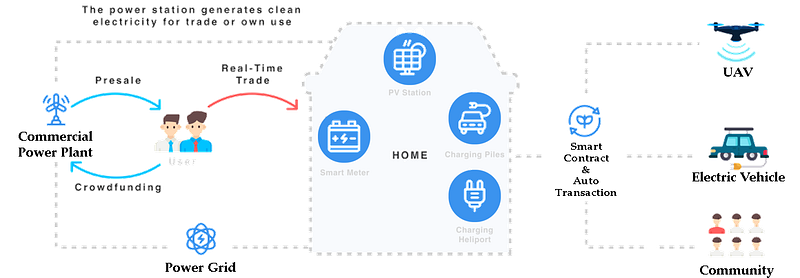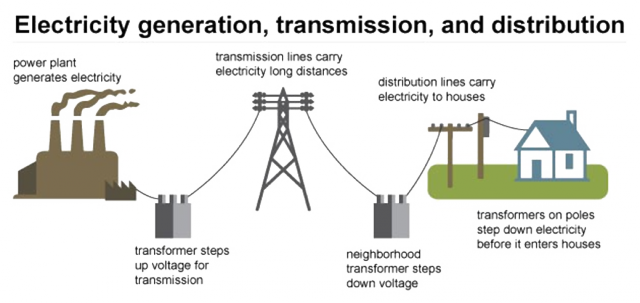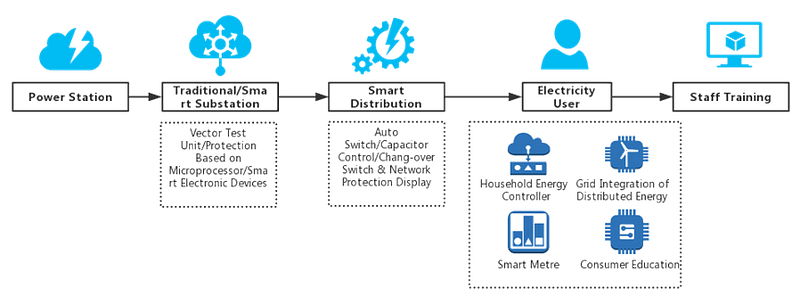
Blockchain is a digital ledger where transactions carried out in cryptocurrency can be recorded chronologically and publicly. Blockchain has been widely studied for its energy applications. It provides innovative solutions for data interaction, information security and creates the possible implementation of these technologies in the energy trading platform. Blockchain is perfect for facilitating the peer to peer energy trap in a decentralized market.
Blockchain provides reliable identification capabilities for every electrical transaction, reduces credit costs, enables rapid automatic settlement between delegated parties, substantially reduces transaction costs and effectively increases efficiency.
The Business White Book (hereinafter referred to as "paper") offers an overview of the economic characteristics of the strengths of some of the world's major markets; therefore this article describes Apollochain's core business, future development and technological base; and finally, this document reveals the current operational structure and the management model of the Appollochain project.

While in the solar energy proposal, according to KPMG research, the increase in the new capacity of photovoltaic power plants will grow by 330%
from 111.68 GW in 2012 to 3695.64GW in 2040:

Managed and managed by a centralized transaction agency is the most common practice of energy trading today. In addition to maintaining its dynamic balance, a large number of third-party agencies (eg insurance, loans, finance leases, ratings, etc.). They engage in energy exchange systems to ensure transaction security. The process and the creation of these charged transactions, from the point of view of costs and security, means huge maintenance costs, expensive third-party costs and is dramatically vulnerable to data loss and default interruptions.
New Apollochain energy trading platform
As an innovative tool, blockchain technology intrinsically corresponds to the energy distributed in the regulated energy market. Following the reform of the advanced forces and an increasingly open retail market, distributed generation, as a rapidly growing sector, means that demand users have both generators and consumers' identities with a deep involvement in the reform of the market. 'industry.
The image shows the basic structure of the Apollochain trading platform that contains the transactional level, the extended levels and the blockchain levels. Renewable energy systems are the principle of the transaction level, while the commercial parts contain electricity, electricity grids, distributed power plants, "smart homes" (domestic users and energy generators) and other renewable energy holders. Each part begins and ends its energy transactions at this level, then all the related data is sent to an additional level that forms an intelligent contract and is eventually stored in the blockchain level.
Above all, Apollochain implements Blockchain 3.0 technology to set up its trading platform. Aiming at all regulated and retail-oriented energy markets around the world, Apollochain can take root in these countries and regions through current connections and resources to build key users that can be generators, wholesalers, consumers of institutional or individual electricity, to realize transactions between the parties, weaken centralized trading costs and avoid losses at government prices. In this case, the smart grid with IoT (Internet of Things), AI (Artificial Intelligence) and Blockchain technology becomes the critical physical foundation to achieve all the above objectives (together "The Energy Internet").
Smart grids enable demand management and can engage in central network networks or create micro-networks by connecting end users geographically close to each other. Furthermore, another important device in smart grids is the intelligent power meter (otherwise known as Smart Meter). Various installations are required to obtain the user's energy consumption data and consumption / production behavior. Based on these data, smart grids, notifying electricity costs, real-time prices, electricity pruning schemes, etc., can reduce programming costs and instruct the electricity consumer to use more rational electricity.

For more information:
Twitter: https://twitter.com/apollochain
Facebook: https://www.facebook.com/apollochain
Media: https: /medium.com/@apollochain
Reddit: https://www.reddit.com/user/ apollochain
Instagram: https://www.instagram.com/aplchain_official
telegram: https://t.me/apollochaingroup
Whitepaper: http: //www.apollochain.io/WhitePaper(Business%20Version).pdf
website: http: //www.apollochain.io
Autor: https://bitcointalk.org/index.php?action=profile;u=1826813
ETH: 0x162b4862c2Aa74eB272974EdF91B754a57A5f01e
Tidak ada komentar:
Posting Komentar